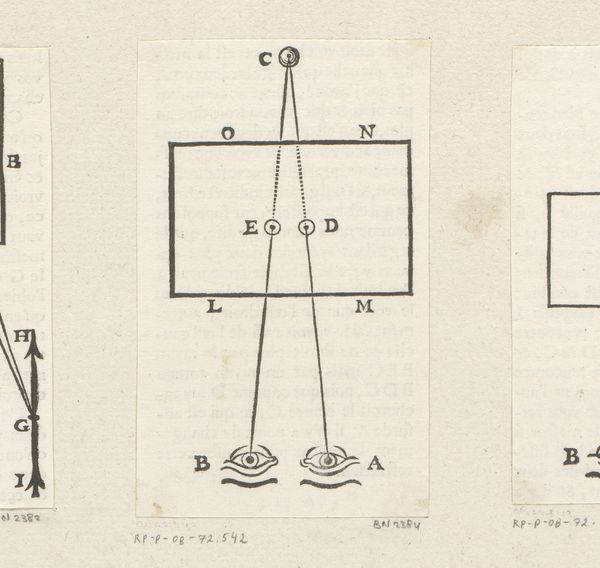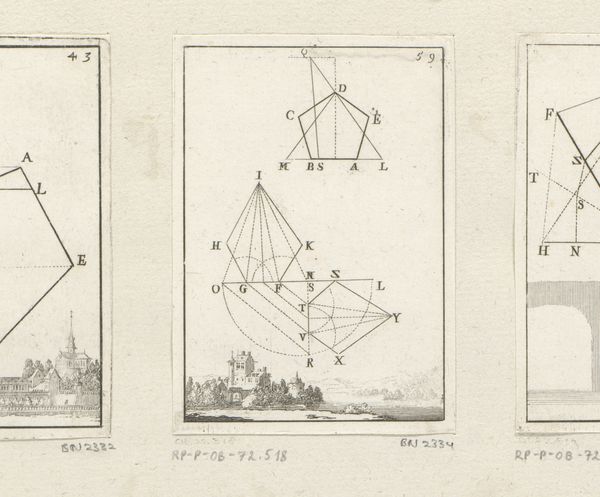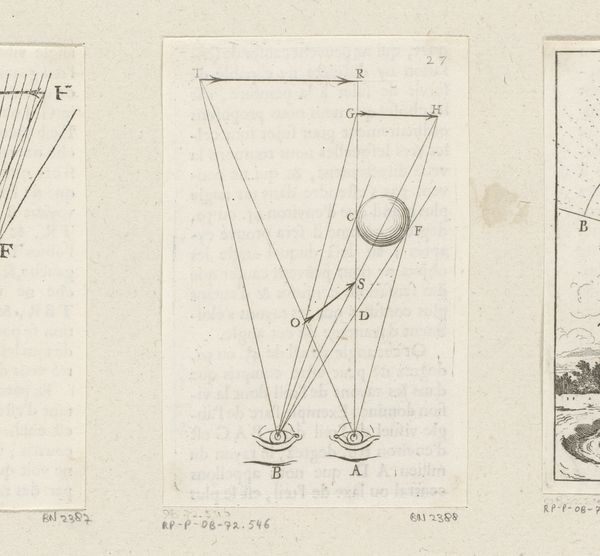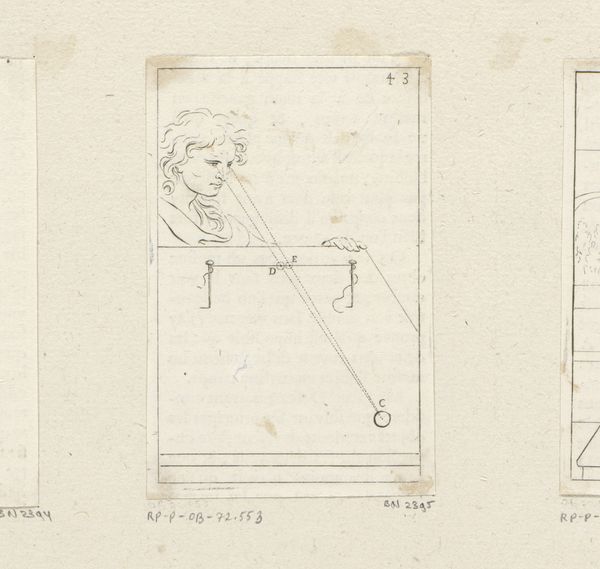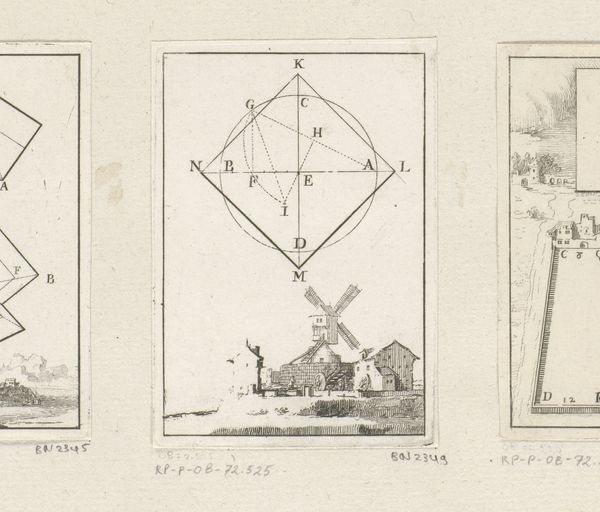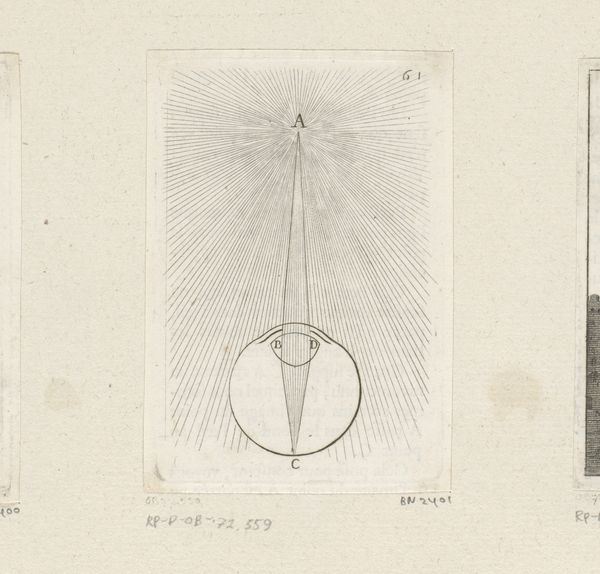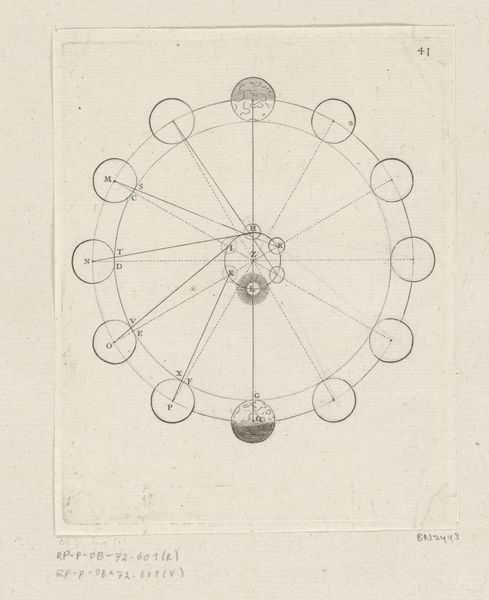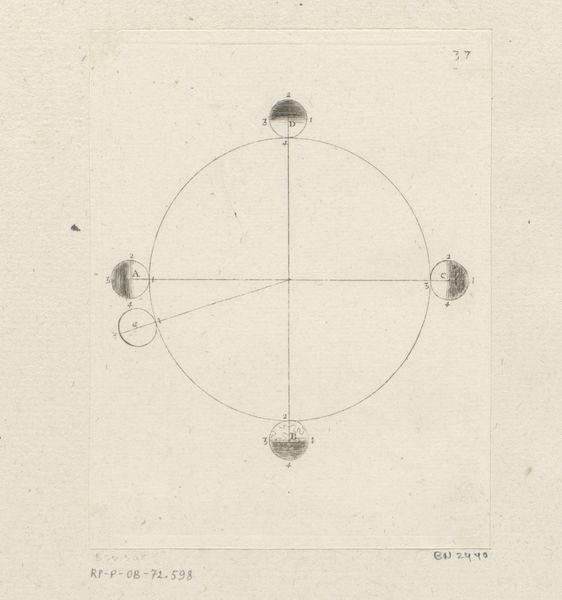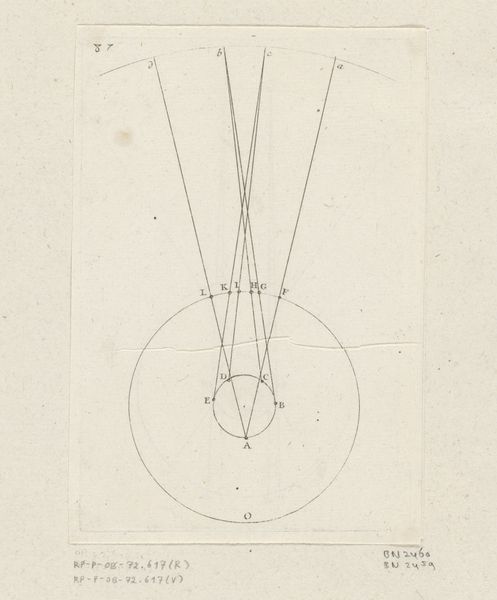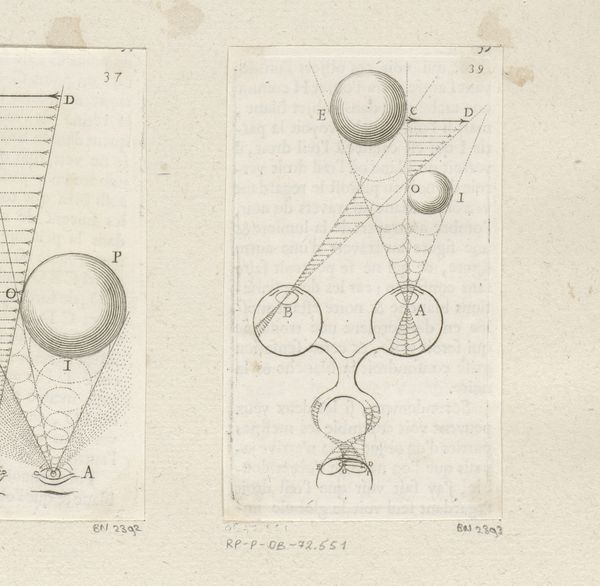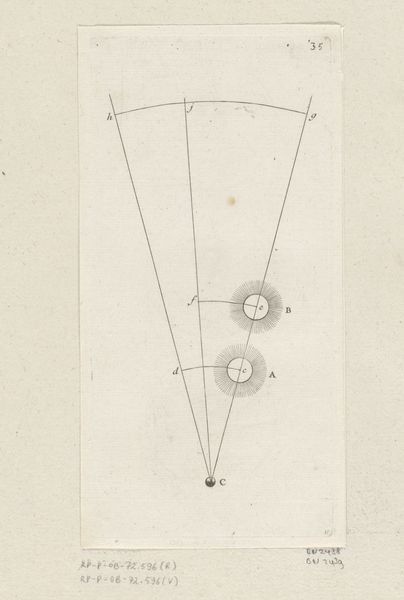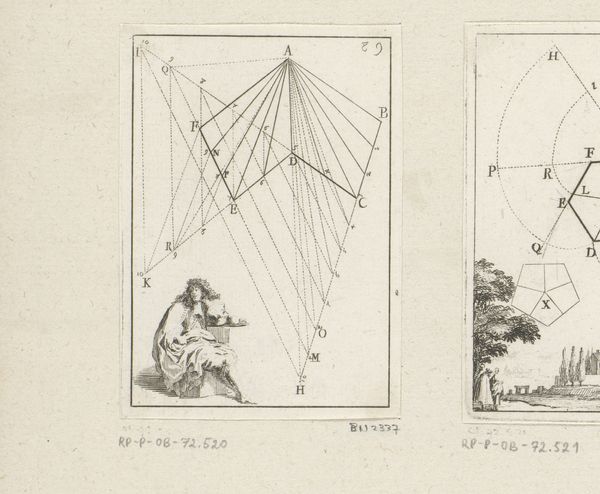
drawing, etching, paper, ink
#
drawing
#
baroque
#
etching
#
perspective
#
figuration
#
paper
#
ink
#
geometric
#
line
#
academic-art
Dimensions: height 115 mm, width 70 mm
Copyright: Rijks Museum: Open Domain
Editor: Here we have Sébastien Leclerc I’s etching, “Twee ogen kijkend naar ruit,” or “Two Eyes Looking at a Rhombus,” from 1679. It’s made with ink on paper. The composition is fascinating – almost scientific. What strikes you most about this work? Curator: What intrigues me is the *how*. Look at the labor involved in producing such a precise instructional diagram. Consider the etching process, the skilled hand meticulously incising lines into the metal plate. This wasn't just about art; it was about the democratization of knowledge through reproducible images. Who had access to these kinds of prints, and how did that shape their understanding of perspective and optics? Editor: So you're saying the process of creating the artwork gives insight into how perspective was understood and disseminated in the 17th century? Curator: Precisely. Etchings like this served a didactic purpose. It's also crucial to remember the value placed on artisanal skill, the hours spent mastering the tools. The lines themselves are material, physical imprints of intention. Are the mathematical forms presented inherently neutral or does the labor inherent in rendering them impact perception of "truth" in the demonstration? Editor: It is amazing to think of the technical mastery needed to produce such precise lines, especially given the technology of the time. I had initially considered it only for the geometrical construction it displayed, not for how it displays labor in image making. Curator: Right. Let's consider the materials themselves: the paper, the ink, and the press. These are commodities embedded within broader economic systems. Were they luxury items or widely available? How did the materiality of the print itself affect its circulation and impact? These questions broaden the horizon of understanding the work and it’s purpose. Editor: Thank you! I didn't realize how much the materiality can speak to the social environment where it was created. I will surely bring this perspective in the upcoming courses.
Comments
No comments
Be the first to comment and join the conversation on the ultimate creative platform.
